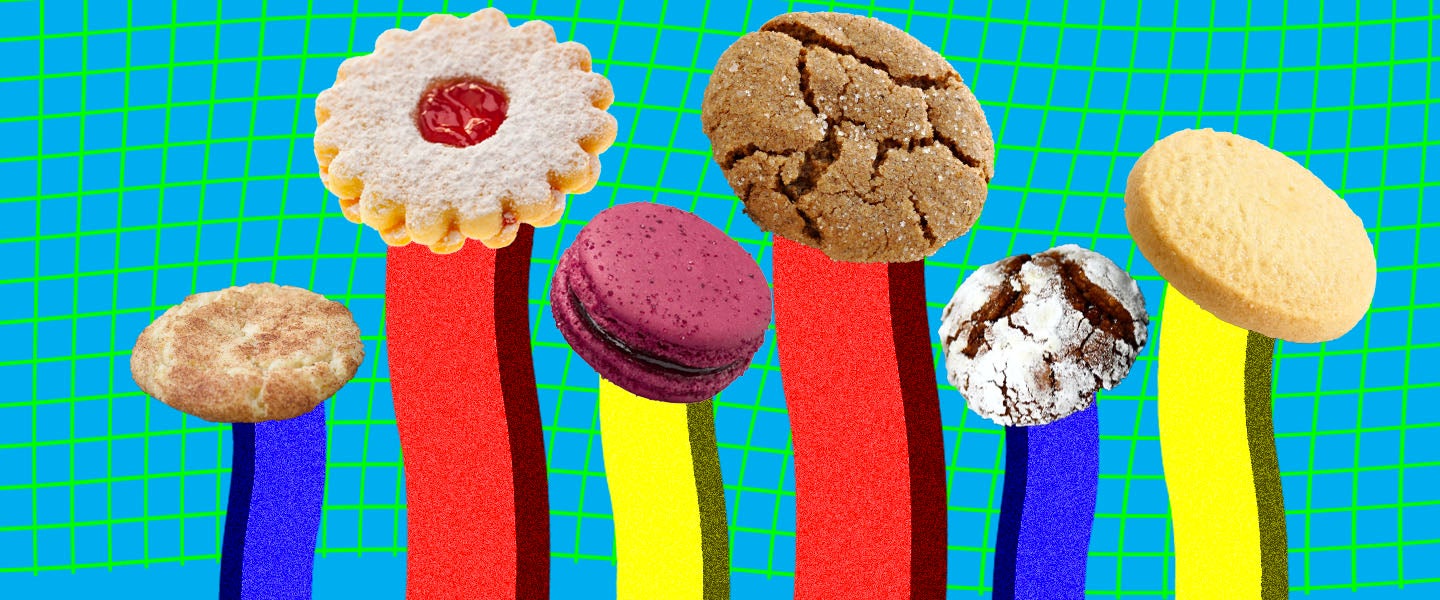Not having a sweet tooth means I usually spend the holidays politely dodging the barrage of Christmas cookies that everyone around me inevitably attempts to shove down my throat. Still, I’ve never made it through the holidays without eating at least one festive sugar bomb.
To make the most of my limited cookie consumption, I asked Dana Hunnes, senior dietitian at the Ronald Reagan UCLA Medical Center, to help me rank classic Christmas cookies by how unhealthy they are — from pretty unhealthy to you-get-a-heart-attack.
But first, here’s the method behind our ranking: “The vast majority of cookies are composed of butter, sugar, flour, eggs and a leavening agent; therefore, in order to rank them, you have to look closely at the varying amounts of these ingredients,” Hunnes explains. “Suffice to say, I wouldn’t recommend eating a plateful of cookies in lieu of healthier fare, but ONE cookie here and there is probably okay.”
Since Christmas cookie recipes also come in many shapes and forms, we attempted to use the most basic recipes for this ranking. With that, let’s see who’s naughty and who’s naughtier…
1. Macaroons: “Macaroons probably have the fewest calories and perhaps more fiber than some of the other cookies, which can be owed to using the flesh of a coconut,” Hunnes explains. “Coconut is also high in saturated fat, meaning this is the most well-rounded cookie on this list — it contains some fiber, some carbohydrates, a smidgen of protein from the egg and doesn’t have butter (which is a boon).”
2. Linzer Cookies: “Even though these have butter in them, they also have less sugar than some of the other cookies, and therefore, may feel more substantial,” Hunnes says, which means you’re less likely to end up eating 20 of them. “They also have some jam, which can be an unsweetened — or no sugar added — variety. That would provide at least some(ish) fruit. The almonds in this recipe also give them some healthy fats.”
3. Snowball Cookies: “These have a nice, big dose of pecans, which as you reported in your previous story [thanks for remembering!], have a healthy dose of fats and are certainly satiating,” says Hunnes. “Relatively speaking, they also have less sugar and butter than some of the other cookies.”
4. Peanut Butter Cookies: “Again, you tend to start with the same base recipe of butter, sugar and flour,” Hunnes says. “But the addition of peanut butter does give them some healthy fats.” More specifically, peanut butter is a good source of unsaturated fat, which lowers cholesterol, and therefore, it reduces your risk of heart disease and stroke.
5. Chocolate Crinkles: “These have a lot of antioxidants from the addition of cocoa powder (especially unsweetened cocoa powder),” Hunnes explains, adding that the molasses in the brown sugar used for this recipe also provides some iron, which supports oxygen-carrying red blood cells. “Again, these use the same base recipe compared to most other Christmas cookies, so the difference really comes from the cocoa powder.”
6. Gingerbread Cookies: Once again, Hunnes says that these little guys are made from the same base cookie recipe; however, they boast a small amount of iron thanks to the addition of brown sugar, and the spices — cinnamon, cloves, ginger and nutmeg — contain some antioxidants.
7. Molasses Cookies: These, again, incorporate the same base cookie recipe, but they’re made by using molasses instead of sugar — and as we already know, molasses contains some iron. “These don’t have the same spices that gingerbread cookies do, but otherwise, they’re somewhat similar,” Hunnes says.
8. Snickerdoodles and Sugar Cookies (tied): “These have a very similar base recipe that’s high in sugar, white flour and butter,” Hunnes explains. “If you’re using a recipe with shortening (as some snickerdoodles do), I would rate those below sugar cookies.”
10. Shortbread: “These are extremely high in butter and sugar,” Hunnes emphasizes, adding that they contain almost no other ingredients.
Guess I’d better get used to mainlining macarons over the next few days.

